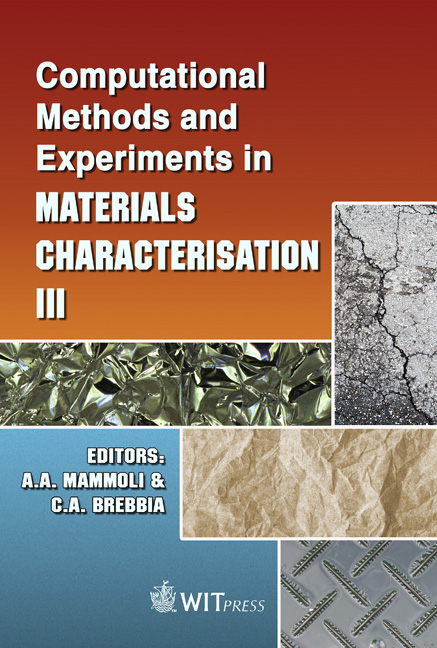Impedance Spectroscopy As A Tool To Study Modifications In The Microstructure Of Concrete In Ionic Migration Experiments
Price
Free (open access)
Transaction
Volume
57
Pages
10
Published
2007
Size
642 kb
Paper DOI
10.2495/MC070141
Copyright
WIT Press
Author(s)
G. de Vera, M. A. Climent & I. Sánchez
Abstract
The study of the penetration of chloride ions in concrete structures is of great interest, because of the pernicious effects that these ions have on the corrosion of steel reinforcements. Accelerated methods have been developed to obtain the diffusion coefficient of chlorides through cement-based materials. One of these methods allows the calculation of both steady and non-steady state diffusion coefficients using a very simple conductivity measurement [1]. The presence of an electric field causes modifications in the microstructure of cement-based materials, and also an acid attack can be produced on the material if the porosity is high enough [2]. As has already been proved, impedance spectroscopy is a powerful technique to study the microstructure of cement-based materials [3]. This technique is used to characterize during the experiment the modifications that are produced in the microstructure of concrete samples during the forced migration tests. The results obtained using impedance spectroscopy have been compared with the results obtained with the mercury intrusion porosimetry, and a very good agreement has been observed. Keywords: impedance spectroscopy, ionic migration, diffusion, chloride, microstructure. 1 Introduction Chloride ions are responsible of many of the corrosion problems of steel embedded in reinforced or prestressed concrete. These corrosion phenomena lead frequently to early deterioration and eventually to risky situations for the stability of structures. In any case, the economical costs inherent to reparation works are
Keywords
impedance spectroscopy, ionic migration, diffusion, chloride, microstructure.





